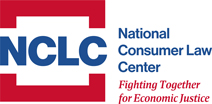This National Consumer Law Center report surveys states’ Student Protection Funds (SPFs) and provides a roadmap for how and why all states through the creation or strengthening of SPFs can provide relief to help students recover financial losses caused by school fraud or sudden closure.
- Report
- Summary
- Appendix A: States with Student Protection Funds (SPFs)
- Appendix B: Distance Education and SPF Eligibility
- Appendix C: Checklist to Evaluate a State Student SPF
- Map: Which Jurisdictions Have SPFs?
- Press release
Related Materials - Wake Up Call to State Governments: Protect Online Education Students from For-Profit School Fraud, Dec. 2015
- Ensuring Educational Integrity: 10 Steps to Improve State Oversight of For-Profit Schools, Jun. 2014
- Student Loan Law
Published January 14, 2021
©National Consumer Law Center, Inc.
Overview
When a college education is cut short by a school closure or a school engages in fraud, the students and their families suffer long-term financial distress. Higher education fraud, when unaddressed, devastates families and their communities, disproportionately impacting low-income, people of color, and women, who start out economically disadvantaged.
In recent years, several large for-profit school chains, including Corinthian Colleges, ITT Tech, The Art Institutes, and Education Corporation of America, deceived hundreds of thousands of students into taking on enormous debts for worthless educations, and then suddenly closed, leaving financial ruin and trauma for students who attended the schools. Now, as for-profit distance education increases, students who enroll in out-of-state distance education programs are particularly likely to be left in the lurch.
Currently, only 20 states have SPFs and most fail to provide adequate relief to harmed students and many of those should be strengthened to adequately protect student borrowers.

Key Recommendations
The report describes specific ways states can amend their laws to strengthen or create SPFs. The ideal SPF would do all of the following:
- Maintain sufficient funds to pay all student claims and administrative costs;
- Require each school to fund a surety bond sufficient to reimburse the SPF for losses caused by that school;
- Be maintained as one single fund that covers all for-profit schools, including degree-granting schools and out-of-state schools offering distance education programs, as well as sham private nonprofit schools that financially benefit their board members or owners;
- Provide relief to parents and other people who financially contribute to a student’s education;
- Establish a SPF claims limitations period, if any, that does not expire as long as any student debt holder can seek repayment from the student;
- Fully reimburse claimants for their total economic loss, including for all loans, grants, and cash obtained by them or on their behalf to allow them to enroll in a higher education program;
- Provide relief based on group claims submitted by law enforcement agencies; and
- Timely resolve SPF applications.
In addition, state agencies should:
- Facilitate widespread student access to SPF relief through an easily accessible claims process; and
- Provide periodic public data regarding SPFs to state legislatures and governors.
Additional Resources
- Learn more about NCLC’s policy work on student loans
- NCLC’s Student Loan Borrower Assistance Project provides information about student loan rights and responsibilities for borrowers and advocates.
- Sign up for NCLC’s Student Loan blog.
Related Publications
- For consumers: Surviving Debt (personal finance book) and Consumer Debt Advice (free articles)
- For attorneys: Student Loan Law



